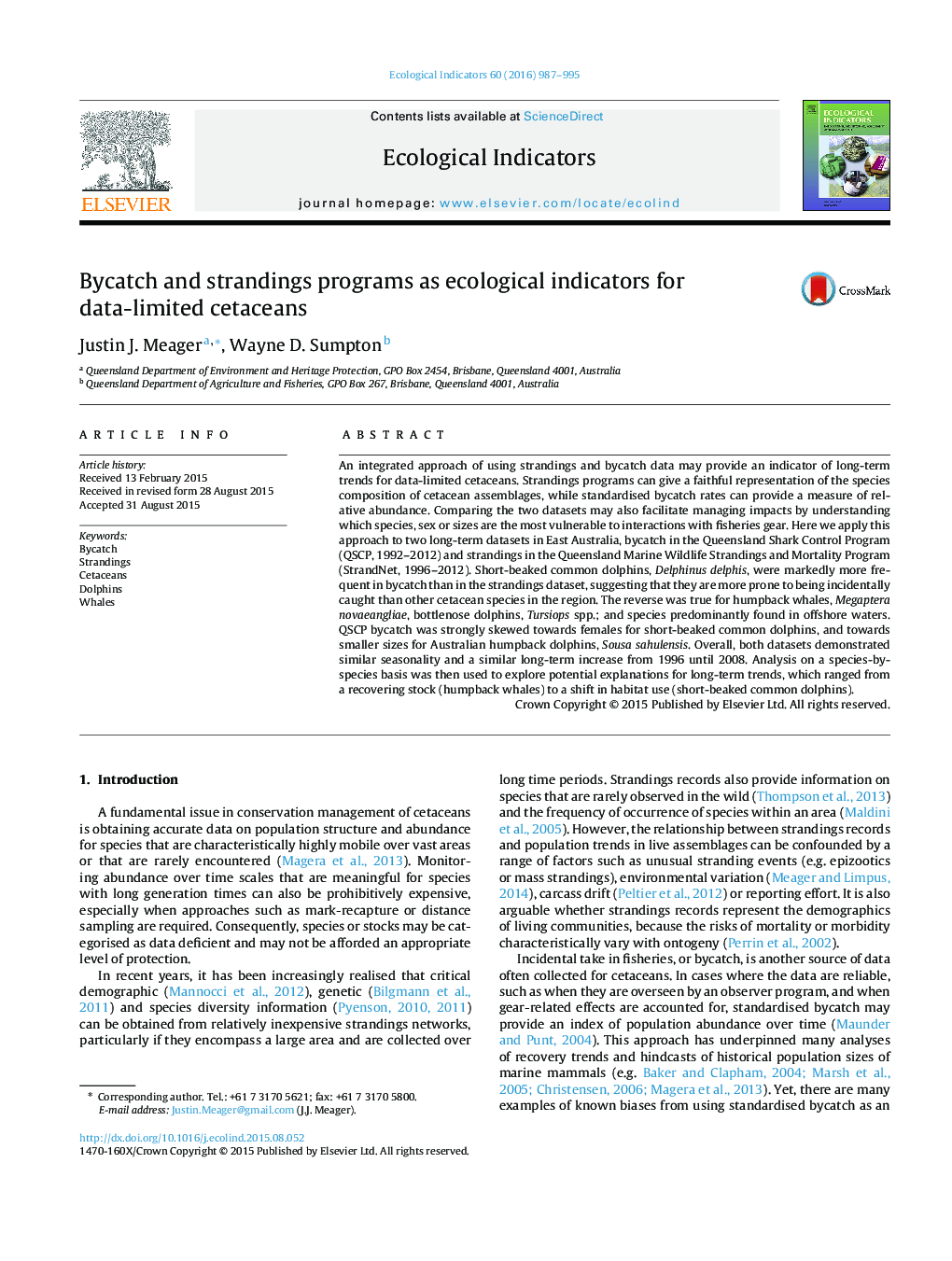| Article ID | Journal | Published Year | Pages | File Type |
|---|---|---|---|---|
| 6294209 | Ecological Indicators | 2016 | 9 Pages |
Abstract
An integrated approach of using strandings and bycatch data may provide an indicator of long-term trends for data-limited cetaceans. Strandings programs can give a faithful representation of the species composition of cetacean assemblages, while standardised bycatch rates can provide a measure of relative abundance. Comparing the two datasets may also facilitate managing impacts by understanding which species, sex or sizes are the most vulnerable to interactions with fisheries gear. Here we apply this approach to two long-term datasets in East Australia, bycatch in the Queensland Shark Control Program (QSCP, 1992-2012) and strandings in the Queensland Marine Wildlife Strandings and Mortality Program (StrandNet, 1996-2012). Short-beaked common dolphins, Delphinus delphis, were markedly more frequent in bycatch than in the strandings dataset, suggesting that they are more prone to being incidentally caught than other cetacean species in the region. The reverse was true for humpback whales, Megaptera novaeangliae, bottlenose dolphins, Tursiops spp.; and species predominantly found in offshore waters. QSCP bycatch was strongly skewed towards females for short-beaked common dolphins, and towards smaller sizes for Australian humpback dolphins, Sousa sahulensis. Overall, both datasets demonstrated similar seasonality and a similar long-term increase from 1996 until 2008. Analysis on a species-by-species basis was then used to explore potential explanations for long-term trends, which ranged from a recovering stock (humpback whales) to a shift in habitat use (short-beaked common dolphins).
Related Topics
Life Sciences
Agricultural and Biological Sciences
Ecology, Evolution, Behavior and Systematics
Authors
Justin J. Meager, Wayne D. Sumpton,
